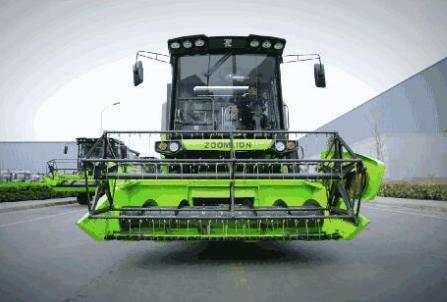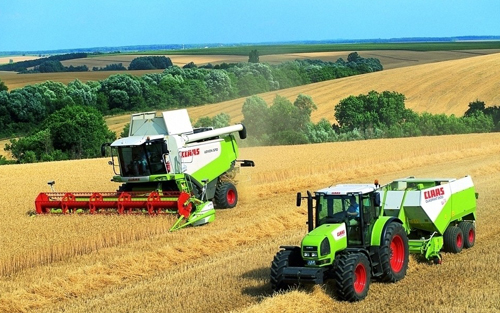Farmers are familiar with wheat harvesters. Every wheat harvest season, people will see many wheat harvesters in the fields. Everyone is busy taking home the ripe wheat. Wheat harvesters have provided great help to farmers. Through the harvester, the efficiency of harvesting wheat can be improved. How does this machine work? The following is an introduction and analysis.

The interior of the wheat harvester is composed of a cutting rod part, a threshing part, a hydraulic lifting part, a separating part, etc. The harvester harvests the wheat according to the direction of the wheat ridge. The harvester transports the wheat to the threshing device for separation. This is through the conveying device. Then the wheat grain and the shell are separated by a separation device. Then put them into the grain box. The head and straw will be separated for the second time to ensure that all grain can enter the warehouse. Each part of the harvester has a specific job, which works very smoothly.
The harvesting part shall be operated in the order of wheat planting. Through the harvester, the crops are pushed to the harvesting table. Through the auxiliary grain supporting device to drive the grain pulling. Cutting is carried out by the cutting part. After the wheat is cut, the crops will be sent to the middle conveying part through the header conveying chain. The middle conveying part clamps the wheat and gradually lays it flat from a vertical state. It clamps and conveys it to the threshing drum part. Feed the wheat head into the drum along the drum shaft to facilitate threshing.

Threshing device part. When the crops move down the roller shaft, the wheat head is continuously brushed and impacted by the bow teeth of the roller. The wheat grains can be taken off. The removed wheat grains are screened through concave plate sieve holes. The wheat is screened into a cleaning device. In the cleaning device, the shaking plate and fan air flow are combined. The cleaned grain will be sent to the grain box through the spiral conveyor.
Some wheat straws and heads sometimes still have wheat grain residues. At this time, the main threshing drum is arranged to the auxiliary drum for secondary threshing. The generated sundries are discharged out of the machine by the miscellaneous discharge port of the auxiliary drum. The wheat straws are discharged from the outlet of the drum by the clamping chain. They fall on the stacking device, and are stacked according to the rated quantity. Some machines can crush straws and return them to the field.
These are the working principles of wheat harvesters. Each of these tasks has a clear division of labor to ensure the smooth harvest of wheat. At present, there are many updates to wheat harvesters. They are more convenient for people to operate and harvest. For those who want to buy wheat harvesters, understanding the working principle of the harvesters can provide a lot of help for later maintenance. When purchasing, you should inquire more about all kinds of information to understand the performance of brands and machines. It can make later use more convenient.